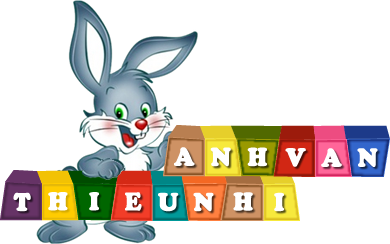
Hỗ trợ online
02862707677
Bài 3: Fraction explanation
(Giải thích về phân số)
Các em làm quen với một số thuật ngữ cơ bản trong bài học Fraction explanation của môn Toán bằng Tiếng anh nhé

Bài 3: Fraction explanation
Another explanation for fractions.Another explanation for fractions.
Hi Starry, let revise fractions.Hi Starry, let revise fractions.
Look at this fraction, here out of 3 equal parts 2 are selected.Look at this fraction, here out of 3 equal parts 2 are selected.
So 2 is a numerator and 3 is denominator.So 2 is a numerator and 3 is denominator.
We read this fraction as 2 upon 3.We read this fraction as 2 upon 3.
Now Starry, look at these paper strip.Now Starry, look at these paper strip.
This figure is divided into 3 equal parts.This figure is divided into 3 equal parts.
Each part of the 3 equal parts of the whole is 1 upon 3.Each part of the 3 equal parts of the whole is 1 upon 3.
So 2 such part is 2 upon 3.So 2 such part is 2 upon 3.
So the coloured part is 2 upon 3 and the uncoloured part is 1 upon 3.So the coloured part is 2 upon 3 and the uncoloured part is 1 upon 3.
Let us look at another example.Let us look at another example.
Here 1 whole is divided into 5 equal parts.Here 1 whole is divided into 5 equal parts.
So each part equal 1 upon 5. Here 3 such part is 3 upon 5.So each part equal 1 upon 5. Here 3 such part is 3 upon 5.
So the part with design is 3 upon 5 and the part without design is 2 upon 5.So the part with design is 3 upon 5 and the part without design is 2 upon 5.
Isn’t it interesting Starry?Isn’t it interesting Starry?
Now observe this.Now observe this.
One whole is divided into 4 parts.One whole is divided into 4 parts.
Each coloured part is 1 upon 4. 3 such part equal 3 upon 4.Each coloured part is 1 upon 4. 3 such part equal 3 upon 4.
Look at this one, if each part is 1 upon 11, 5 such part is 5 upon 11.Look at this one, if each part is 1 upon 11, 5 such part is 5 upon 11.
Look at the next one, if each part is 1upon 13, 6 such part is 6 upon13.Look at the next one, if each part is 1upon 13, 6 such part is 6 upon13.
If each part is 1 upon 7, then the four such parts will be 4 upon 7.If each part is 1 upon 7, then the four such parts will be 4 upon 7.
Let us revise. Fill the boxes with the proper fraction.Let us revise. Fill the boxes with the proper fraction.
The first one state each part equal 1 upon 3, 2 such parts is (dash). The answer is 2 upon 3.The first one state each part equal 1 upon 3, 2 such parts is (dash). The answer is 2 upon 3.
The second one state that each part is 1 upon 9, 7 such parts is (dash). The answer is 7 upon 9.The second one state that each part is 1 upon 9, 7 such parts is (dash). The answer is 7 upon 9.
The next one tells us that it part equal 1 upon 8, so 5 such parts equal (dash). The answer is 5 upon 8.The next one tells us that it part equal 1 upon 8, so 5 such parts equal (dash). The answer is 5 upon 8.
Let us do another activity for each fraction.Let us do another activity for each fraction.
Name the numerator and denominator. Write the fractions in words.Name the numerator and denominator. Write the fractions in words.
Answer the first one.Answer the first one.
Here the numerator is 3 and denominator is 13 and the fraction is read as three upon thirteen.Here the numerator is 3 and denominator is 13 and the fraction is read as three upon thirteen.
Answer the second one here the numerator is 7 and denominator is 9 and the fraction is read as seven upon nine.Answer the second one here the numerator is 7 and denominator is 9 and the fraction is read as seven upon nine.
Answer the third one.Answer the third one.
Here the numerator is 5 and the denominator is 21 and the fraction is read as five upon twenty-one.Here the numerator is 5 and the denominator is 21 and the fraction is read as five upon twenty-one.
And now answer the last one.And now answer the last one.
Here the numerator is 6 and denominator is 7, the fraction is read as six upon seven.Here the numerator is 6 and denominator is 7, the fraction is read as six upon seven.
So, today you have learnt another way of looking at the fractions. ByeSo, today you have learnt another way of looking at the fractions. Bye

